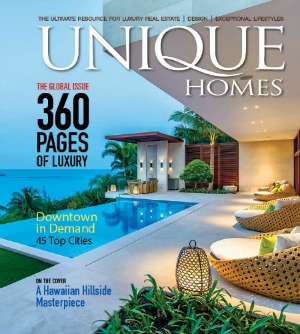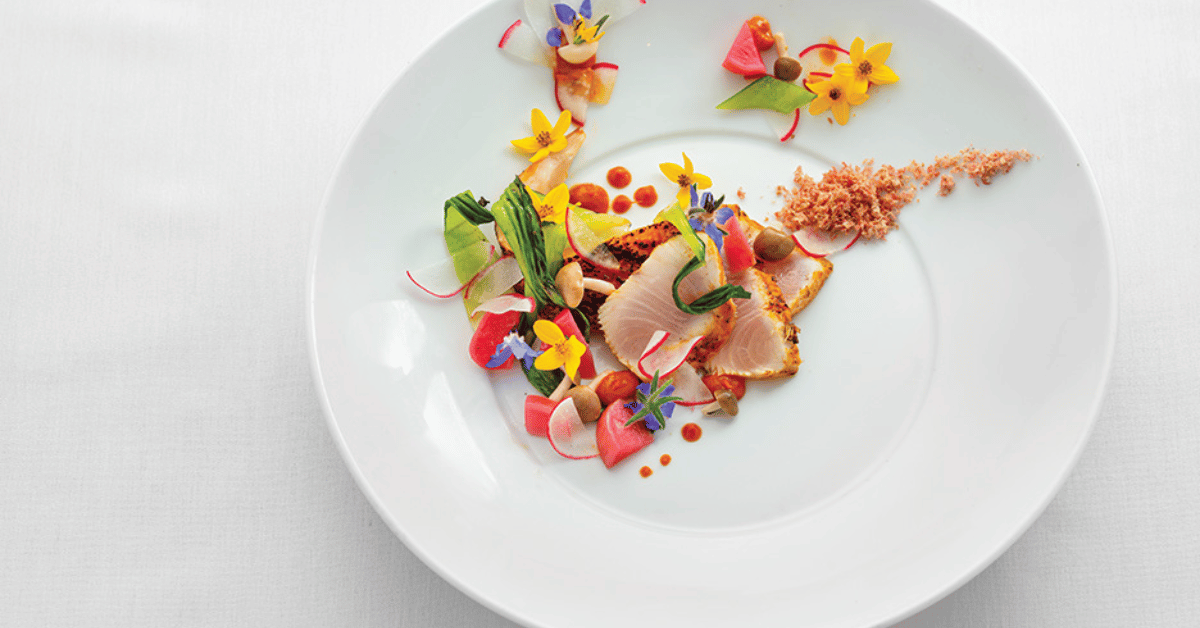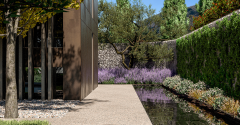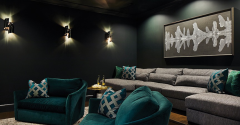Reimagining outdated design, architects are constantly predicting the needs and desires of the next generation in an attempt to create trendy, innovative looks. Whether in the hospitality, mixed-use or residential space, here is a peek at what’s trending in design this year.
By Alyssa Gautieri
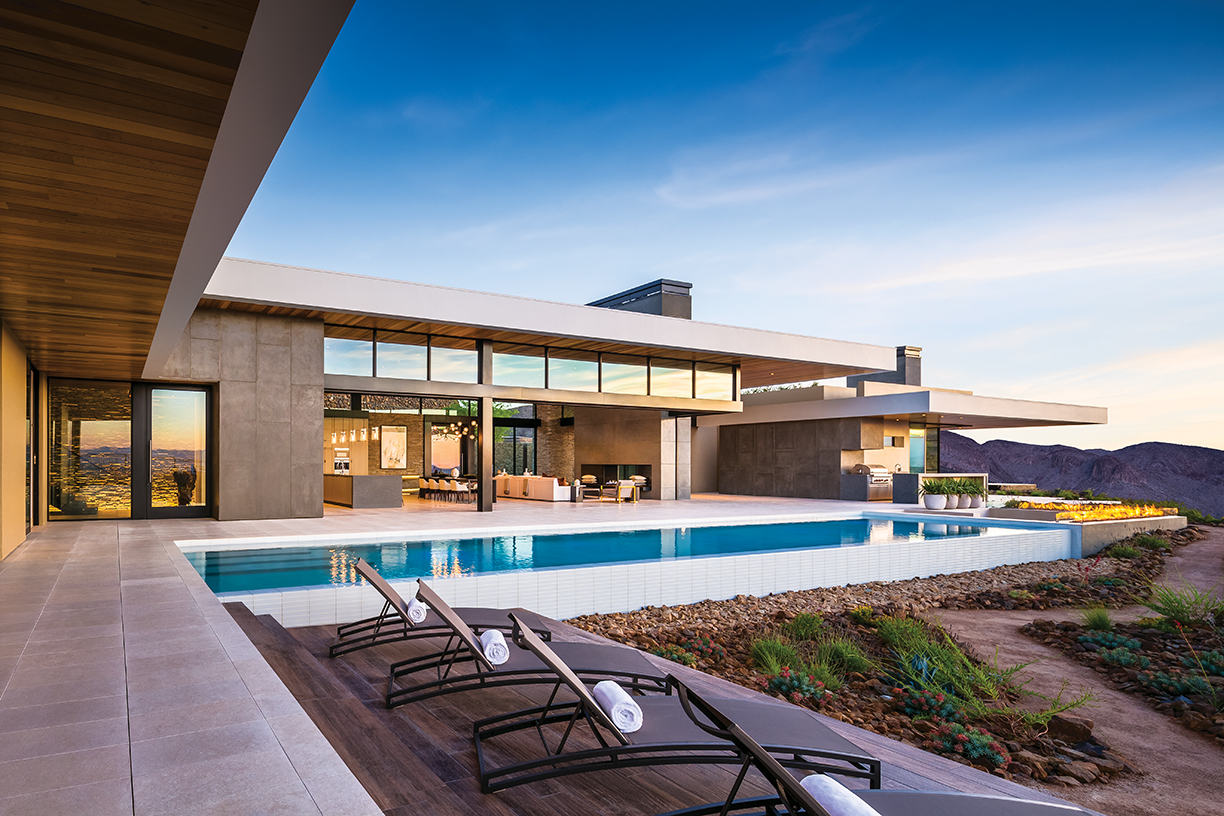
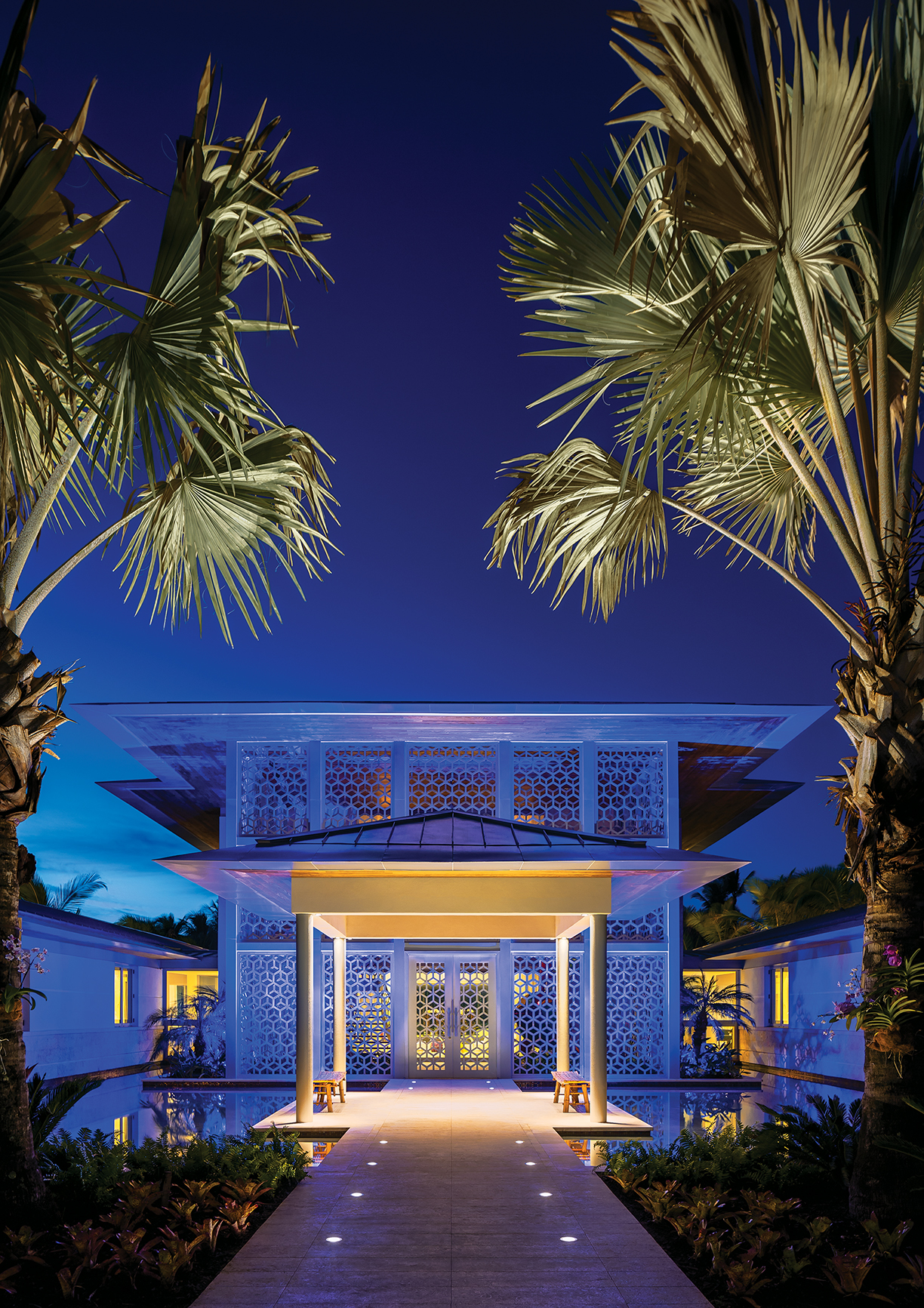
“In 2018, lines are getting cleaner, spaces are feeling lighter, and everything is designed to be more relaxing.”
— Barry Goralnick, principal of Barry Goralnick.
Photos by Ciro Coelho Photography
The re-emergence of Mid-century Modernism, a preference toward sustainability and the demand for amenitized living are among the many trends taking over 2018.
First and foremost, 2018 is moving away from super modern spaces as consumers increasingly crave a “new twist on traditional” design, according to Barry Goralnick, principal of Barry Goralnick.
“We are evolving out of the uber-modern, all glass, wide open spaces,” he explains. “There is a desire to warm up and add personality to these inherently dehumanized spaces. People are yearning for more privacy, more intimate spaces, and a place to hang their art. Therefore, the pendulum is swinging back toward classic design with richer details.”
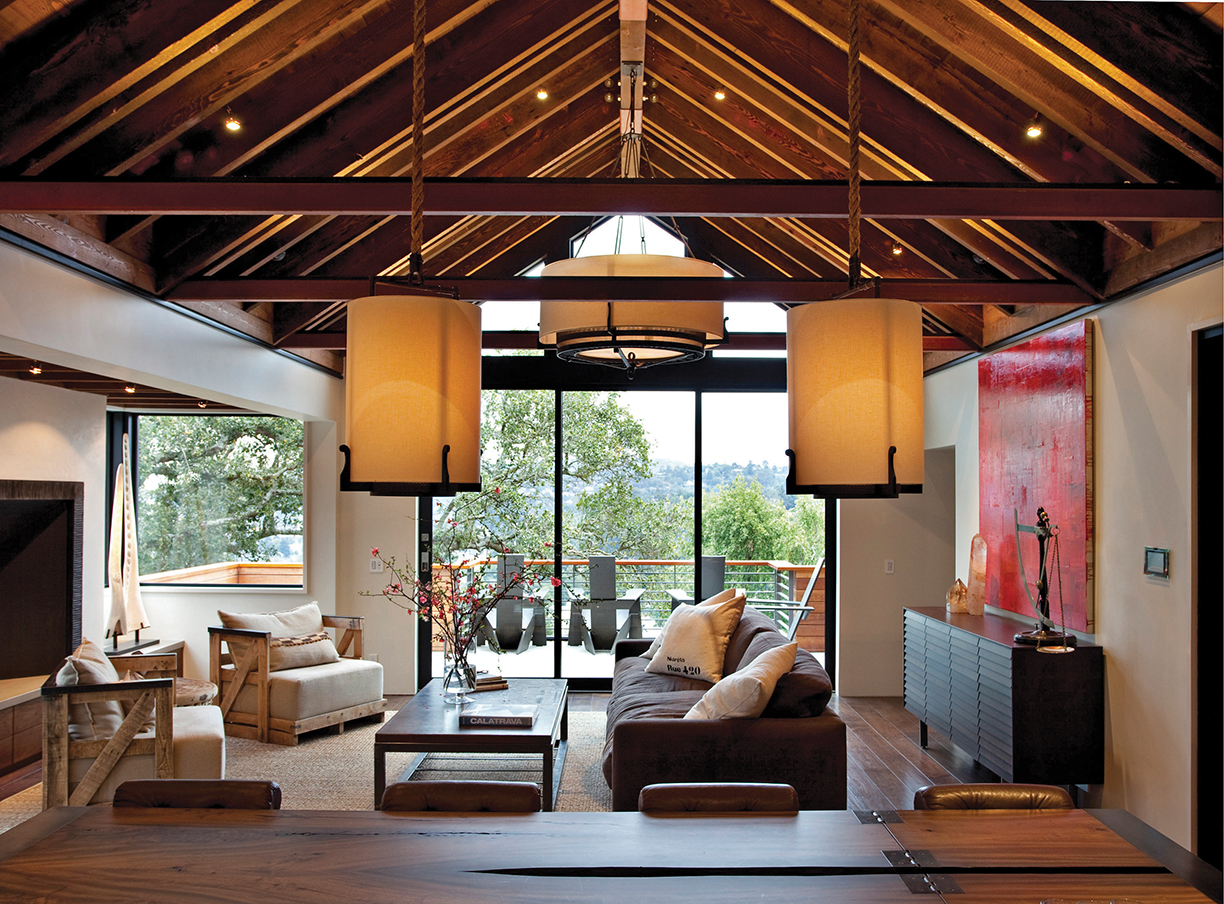
Photo courtesy SB Architects
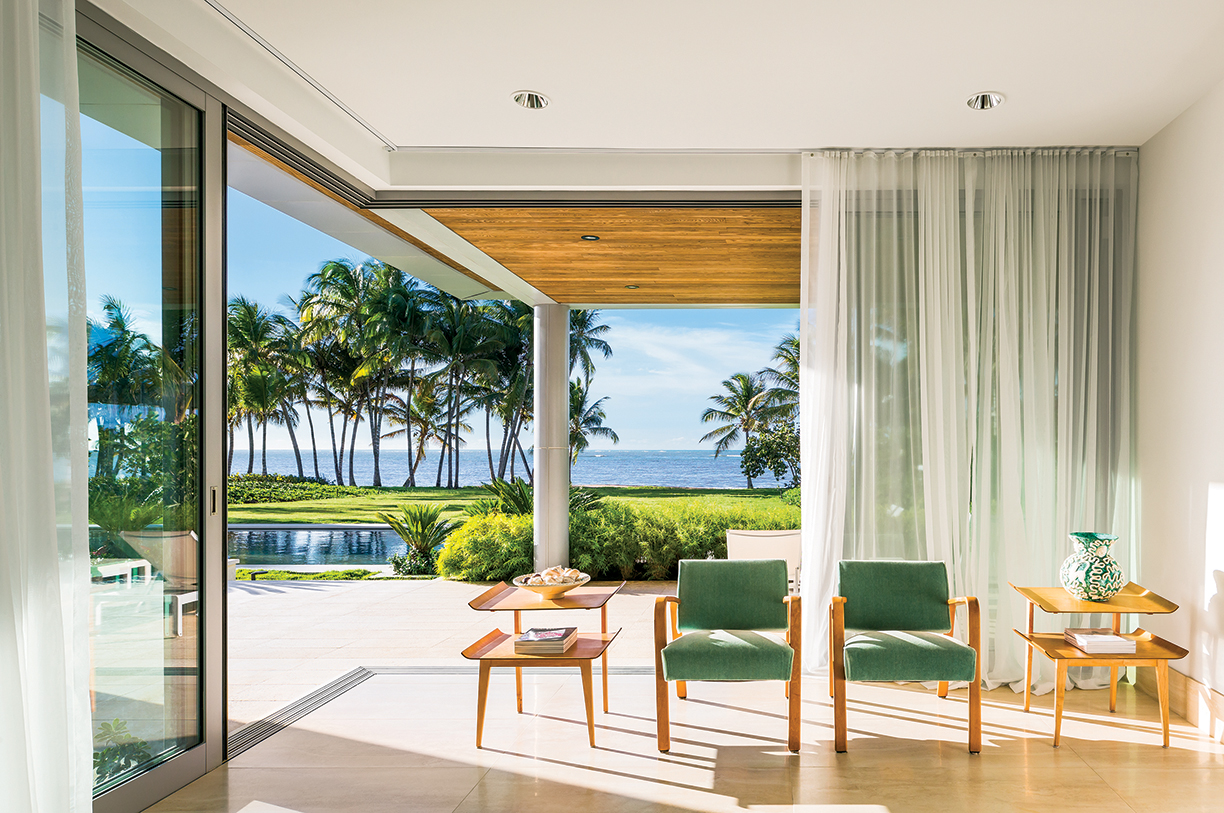
Transitioning back toward classic design, homeowners are yearning for more simple, private and intimate spaces.
Photo by Ciro Coelho Photography
Moving back toward clean lines, consumers are demanding more simplistic and less complicated styles. “In 2018, lines are getting cleaner, spaces are feeling lighter, and everything is designed to be more relaxing,” Goralnick adds.
Troy Dean, the founder and owner of Troy Dean Interiors, says the modern movement was born prior to 2018, but has become more prominent. “Simplifying things and the idea of ‘less is more’ is becoming much more accepted,” he says. “People are beginning to understand the simplicity of architecture.”
Transitioning away from the ultra-modern style, architecture in 2018 has become all about art. In residential development, architects are getting creative with art integration as the lines between art and architecture blur.
“There is no better art than architecture,” Dean says. “A home should be a piece of art when you are finished. Everything that we do definitely revolves around the architecture being the art of the finished project. Once your architecture is done well, everything else is secondary.”
One of the many ways architects are finding art in architecture is through transitional indoor/outdoor spaces. Replacing traditional doors and windows with retractable walls and disappearing glass, architects are finding innovative ways to merge indoor and outdoor spaces. “When you are in a good climate, everyone wants to be outside,” Dean jokes. “No one wants to be stuck inside with no natural light. There has always been a push toward becoming one with nature, and now architecture is making that possible.”
This year has also become all about maximizing views. Across all developments, consumers are shopping for property specifically for the view. One-of-a-kind views can often serve as inspiration when it comes to the architecture and design of a development.
“Your whole experience of modern living is becoming a little more view friendly,” Dean explains. “It is all about taking advantage of the views. From an architecture perspective, when you are planning your floor plan, you really begin to think about views.”
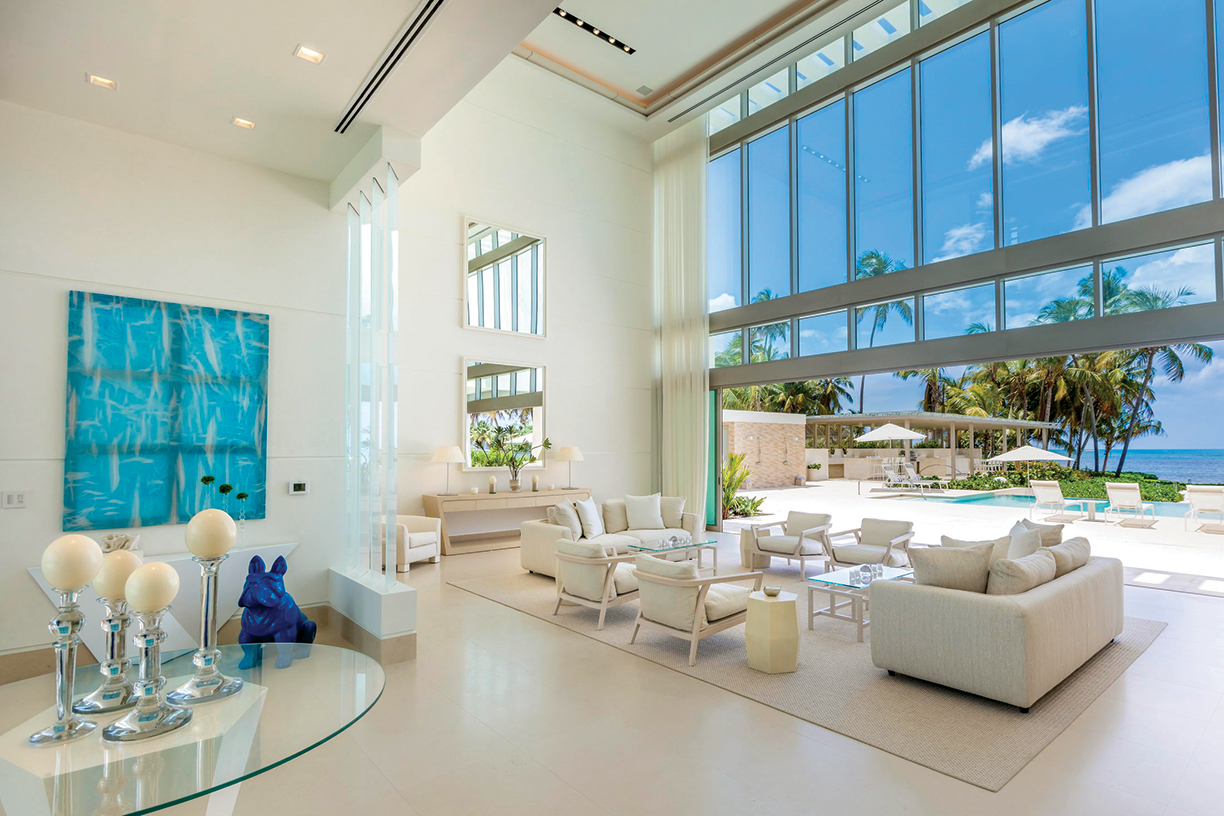
Maximizing views and embracing indoor/outdoor living have become two of 2018’s biggest trends.
Photo courtesy SB Architects
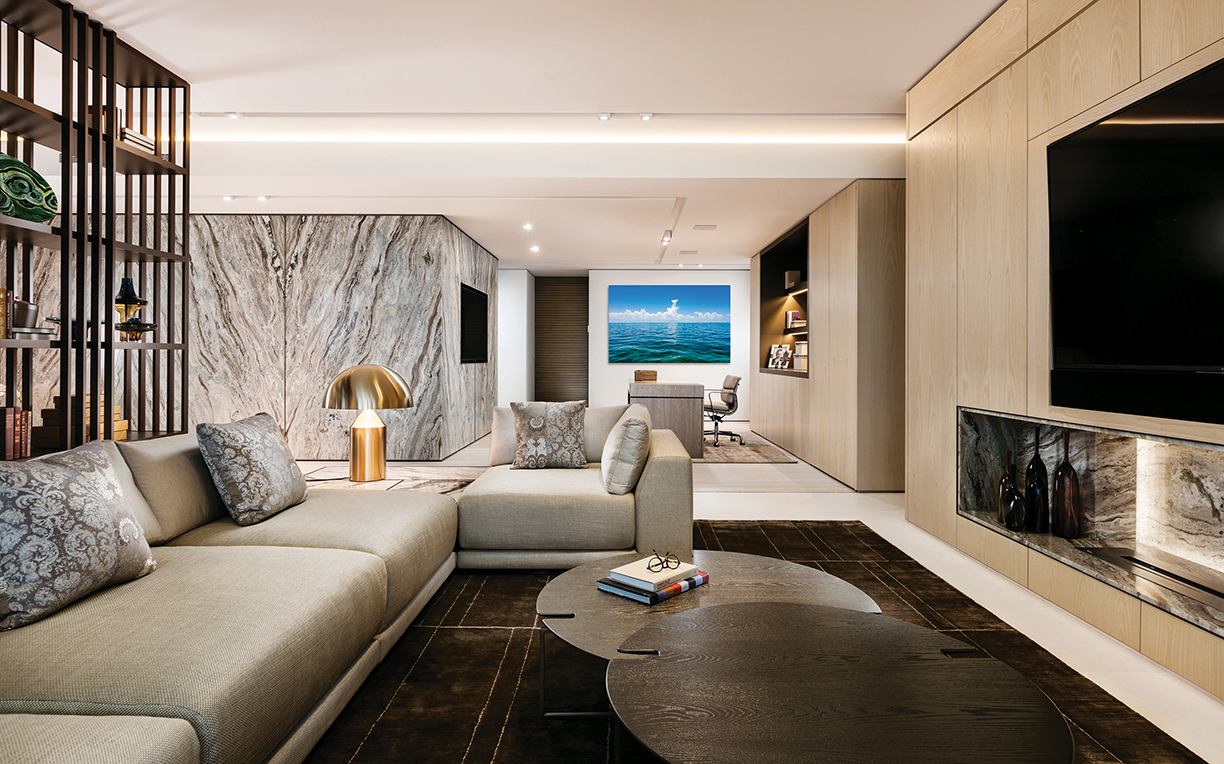
Photo courtesy Troy Dean
In residential development, amenitized living is dominating as luxury homeowners increasingly seek resort-style living. Similar to a boutique hotel, residential spaces are blurring the lines between resort and residential living as designers curate unique amenities for homeowners who want to feel as though they are on vacation year round.
“Today’s luxury real estate marketplace, homebuyers’ lifestyles, hobbies, and collecting habits are defining their home life and shaping the features and amenities within,” Lee says. “Over the next 10 years, we will see changes regarding home layout, features, systems and products.”
Across all developments, one of the biggest trends of 2018 is sustainability. While this trend is not new, eco-consciousness continues to be top-of-mind for homeowners as the possibilities are constantly shifting and adapting with new technology.
Lee acknowledges the overwhelming trend toward sustainability, and the increased desire for energy-efficient homes. “The trend toward architectural sustainability and eco-sensitivity is expanding its reach,” he says. “Through integrated site design, a comprehensive approach to sustainable building and site design, sustainable residential landscape architecture practices can not only improve the environment, but also result in net-zero or even climate positive homes.”
Sticking with the trend of eco-consciousness, prefab homes — homes that are built in sections in a facility then later assembled on a home site — have recently entered the luxury sector. Using a custom design approach, evoDOMUS creates unique, modern prefab homes that minimize ecological impact.
According to Alexander Kolbe, CEO and cofounder of evoDOMUS, the biggest appeal of prefab homes is their positive environmental impact. “Homeowners want more energy-efficient homes,” he says. Whether limiting emissions, fossil fuels or waste, “people are now doing what they can to try to save the planet. It’s a worldwide movement.”
According to Alexander Kolbe, CEO and cofounder of evoDOMUS, the biggest appeal of prefab homes is their positive environmental impact. “Homeowners want more energy-efficient homes,” he says. Whether limiting emissions, fossil fuels or waste, “people are now doing what they can to try to save the planet. It’s a worldwide movement.”
2018 is a big year for design and architecture — which Dean believes has been made possible by many innovative advances in technology and the growing age of digital media.
Forcing cutting-edge ideas and innovative techniques, modern technology and the age of social media continue to change the game for architects and designers. Sharing ideologies with competitors across the globe has rapidly become the norm, and for creative designers it is no longer enough to just top the work of nearby neighbors.
Photo courtesy of evoDOMUS
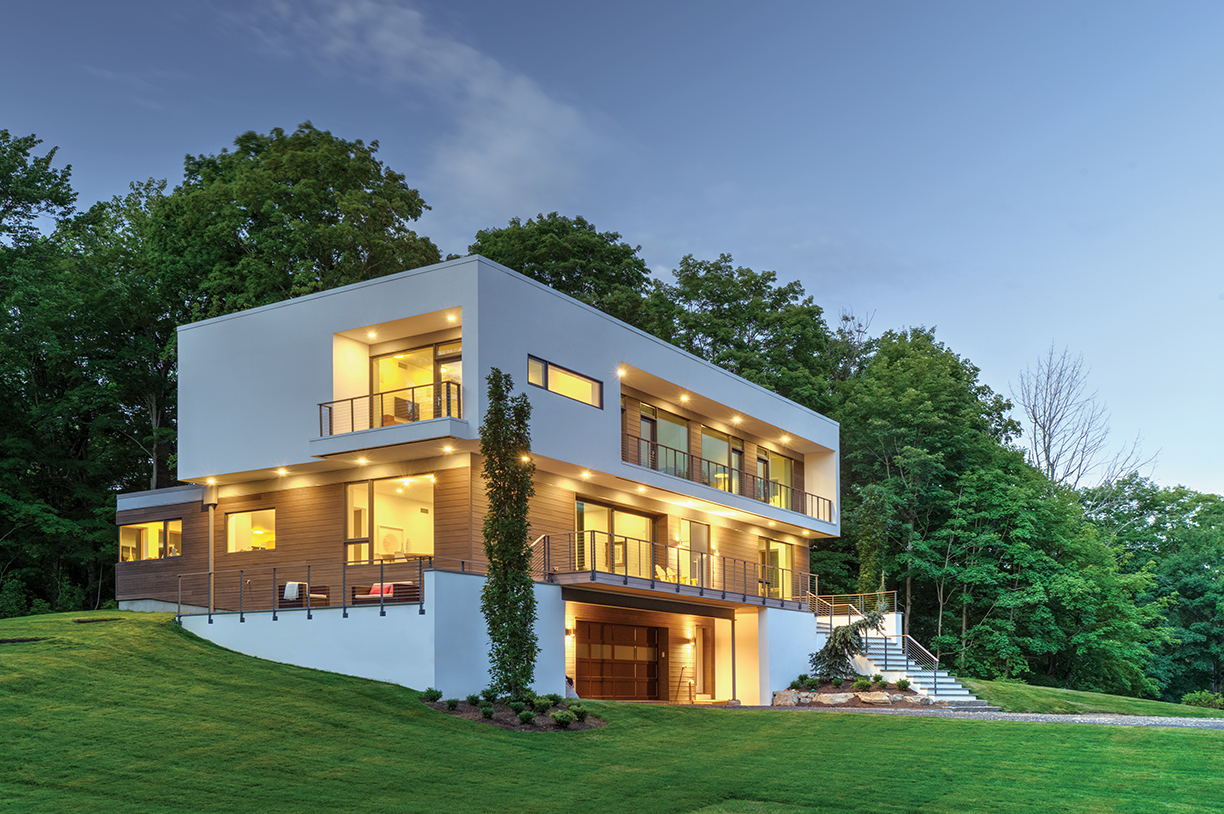
Prefab homes are entering the luxury market in 2018 as eco-consciousness becomes top-of-mind for homeowners.
“Technology is the leading reason that 2018 is going to be a great year,” Dean believes. “The smaller our world gets — through the ability to share good ideas — we are moving that much faster. The blending of different ideologies and [the ability to] captivate different audiences [around the world] is impacting not just 2018, but all years in the future.”
Goralnick also acknowledges the increasing impact of social media. Amidst a culture that values instant gratification, architecture and design must offer instantaneous appeal. “In our Instagram world, everything from new products to homes and hotels must have instant curb appeal to gain and retain people’s interest,” Goralnick says. “Good architecture and design address both the need for instantaneous appeal, as well as lasting attraction, functionality, comfort, and emotional wellbeing.”
The following article originally appeared in the Spring 2018 issue of ERA Real Estate Distinctive Properties Magazine.
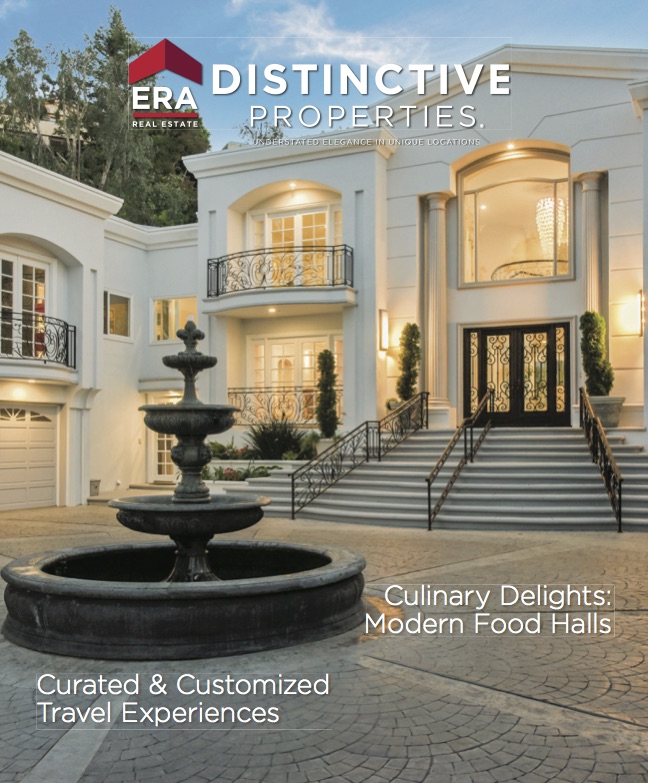
At the International Builders’ Show, John Burns Real Estate Consulting identified six new home construction and repair/remodeling design trends.
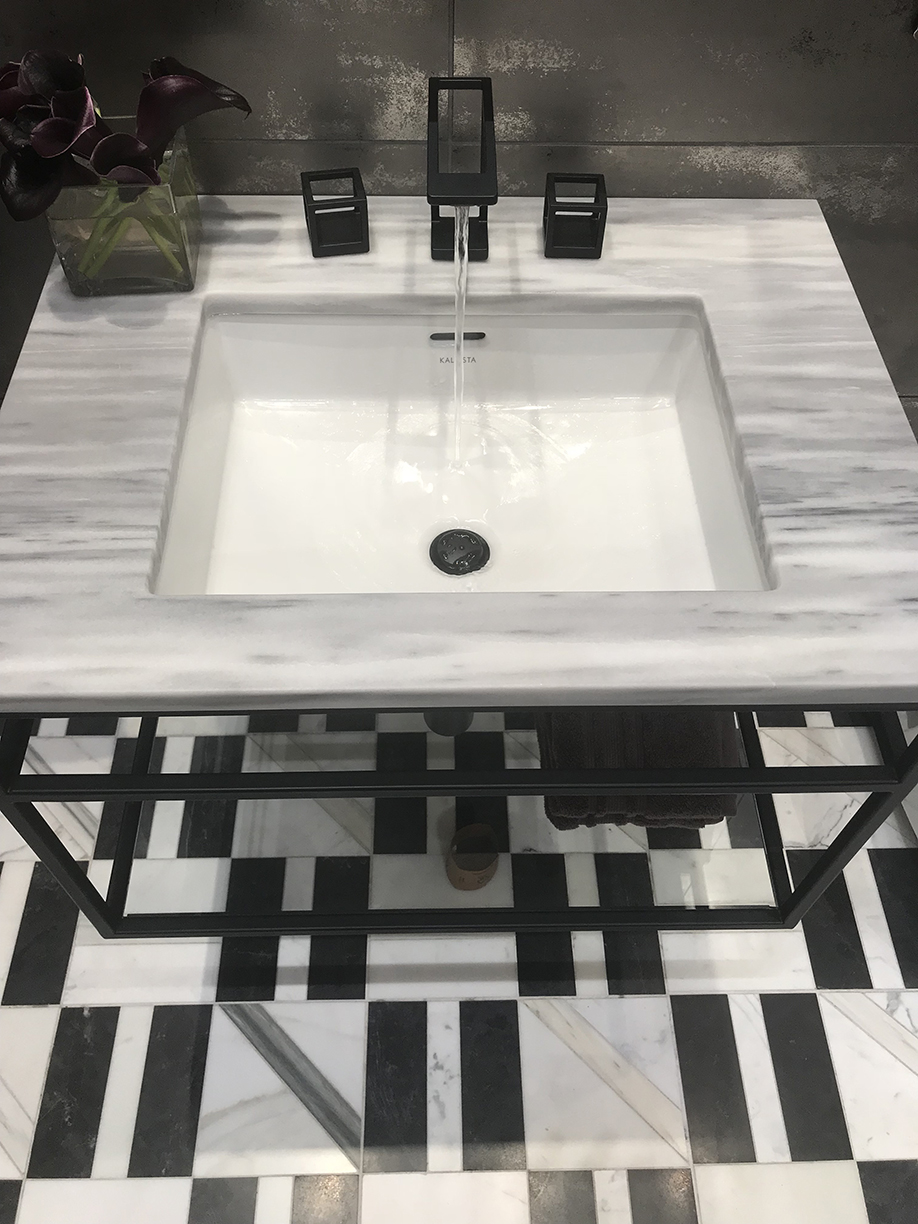
Backed by significant consumer research — which has become easier thanks to consumer behavior on websites such as Houzz and Pinterest — building products companies continue to offer new products to stay one step ahead of the competition. John Burns Real Estate Consulting’s growing building products research and consulting business, as well as its DesignLens™ business, continue to help the company inform its expanding builder and developer clients.
- ioT Connectivity
- Labor Efficiency
- Engineered Products
- Black Finishes
- Simplified Customization
- Ultra Modern
Internet of Things (IoT) technologies open the door to whole-home connectivity.
Amazon’s Alexa and other personal assistants have opened the flood gates for smart home products, especially in plumbing, appliances and home security.
- Plumbing: Companies debuting the latest smart bathroom products at 2018 International Builders’ Show included Moen, Delta, KOHLER and American Standard.
- Appliances: ioT connected products for the kitchen and other parts of the home were also on full display. ioT connectivity is important because it makes using smart products throughout the home a seamless, user‐friendly experience.
- Home Security: Smart products related to home security have been around for a few years, but companies like Broan‐NuTone and Baldwin have rolled out new introductions with enhanced features including voice‐control though Amazon and Microsoft platforms.
Labor efficient products take center stage.
Building product manufacturers continue to invest in products that streamline the installation processes, with KATERRA’s large booth the poster child for potential labor disruption this year.
- Turn‐Key Construction Solutions: KATERRA’s booth highlighted its plans to revolutionize construction, controlling nearly every part of the value chain from procurement of raw materials to framing and finish work. It plans to be a one‐stop shop for production building, controlling cabinet manufacturing, finish plumbing installation and wood floor manufacturing.
- Wall Panels: Manufacturers have been designing products that eliminate labor in the framing process for several years. At the 2018 International Builders’ Show, Huber Engineered Woods debuted advanced versions of its R-Series Modular Wall Sheathing Panels, in four different thicknesses, as insulated wall panel solutions for various climates. Structural wood panels with protective barriers eliminate the need for house wrap and on-site framing. It also provides a continuous barrier to moisture and air that optimizes energy efficiency.
- House Wrap/Seals: Residential‐grade sealants and tapes have been around for decades but companies are beginning to design better, more forgiving products that create efficiencies in the framing process. Many companies, including DuPont and Georgia Pacific, introduced new flexible tapes that cover wide surface areas while creating tight seals around exterior wall outlets or between structural panels. Framing crews can spend less time measuring and cutting outlets to precise fits because these products seal any imperfections that exist as a result of a quick cut.
- Fittings: A modular under the sink rough‐in plumbing solution that eliminates the need for on the job‐site pipe fabrication, sweating and sealing was launched by Keeney Manufacturing Co this year. The pipes can be connected in just three steps, similar to other labor‐eliminating quick‐connect fittings and supplies on the market.
- Plumbing: Updating a shower is one of the most expensive, labor intensive components of a bathroom remodel. In recent years, many plumbing manufacturers have launched retro‐fit ‘custom‐shower’ solutions that allow plumbers to upgrade a shower without going behind the wall, saving time and money for the installer and homeowner.
Engineered products offer better design and less maintenance.
Engineered products look increasingly like their natural counterparts, often at better or comparable prices, and continue to offer meaningful value propositions to the trade and consumers.
- Windows and Doors: Door manufacturers continue to build lower‐maintenance doors made from metal or composites that look just like solid wood alternatives.
- Structural Lumber: LP debuted a new subfloor, infused with Gorilla Glue, that it markets as stronger and more water resistant than traditional OSB.
- Decking: Trex and other composite decking manufacturers continue to expand offerings that make deck installation and maintenance simpler for the installer and homeowner.
- Engineered Wood Products: Weyerhaeuser launched a new parallam® that it claims is one of the most durable engineered wood beams on the market and it comes in the form of a fireplace mantel — a unique application that has become fashionable in interior design.
- Siding: Companies continue to develop siding made from metal or composites that offer the look of wood but are designed to shorten installation times and eliminate maintenance for the homeowner.
- Plumbing: Paneling solutions for custom showers continue to gain popularity in the custom‐shower segment as these products not only eliminate labor (panels are far less labor intensive than tile), but they also requires less homeowner maintenance (no grout, fewer leak paths). Although plumbing manufacturers have been designing similar products for years, solid surface and laminate manufacturers such as Wilsonart are now introducing products for this segment as well.
- Countertops and Surfaces: Engineered Stone (also known as ‘Quartz’) product offerings continue to grow, emphasizing easier to maintain products than natural stone slabs like granite, marble and soapstone. Consumers often prefer engineered designs because the factory‐controlled process provides a consistent look. With major laminate and solid surface players such as Corian making large investments in this now very‐competitive market, prices may come down as more capacity comes online.
Black is back.
Black finishes dominate the appliance, plumbing, hardware and window/door exhibits.
In the design community, it’s often difficult to delineate between what is fast‐fashion and what will become a mass trend. In 2018, it is clear that black finishes are a huge trend in the building products industry. Home appliance manufacturers debuted ‘black stainless’ several years ago, and plumbing, hardware and window and door manufacturers have quickly followed. Mixed metals, perhaps a developing trend, often include black as well.
Customizing becomes simpler.
Customized product offerings this year focused on minimizing costs and complexity for the consumer. Standouts included private-label hardware options, mix-and-match handle/spout colors and finishes and appliance panel customizing options.
The design community and homeowners love choice. Custom product specification has historically been a complex and expensive process, but product manufacturers have invested heavily in lines that offer the customer more options to truly customize or personalize a space. Higher‐end finishes such as specialty door hardware no longer need to be specified from a separate vendor or commissioned made‐to‐order from local artisans. Today, consumers can get similar modifications directly from the door, cabinet, appliance or window manufacturer, making product customization easier than ever.
Design has shifted to ultramodern.
Exhibitors highlighted ultramodern interior designs in the 2018 International Builders’ Show, mirroring the home builder shift to ultramodern home elevations.
Many new product launches across categories leaned ultramodern in their design aesthetic, mirroring the home builder shift to ultramodern home elevations. Themes included large/oversized formats in doors, surfaces and plumbing products; modern cubist/geometric design in tile, surfaces and plumbing products; and unique ombre finishes.
Photo courtesy of Steve Basten at John Burns Real Estate Consulting
This article originally appeared in the Spring 2017 Edition of Homes & Estates Magazine.
Harbingers of fashion and design, affluent consumers have become virtual arbiters of what’s in and what’s out.
By Camilla McLaughlin



“My customers are way more educated than they ever have been. I think they’re more aware of design, more aware of what’s out there,” says New York City’s Shawn D Henderson, who is one of the Architectural Digest’s 100 top designers.
“The high end usually wants to be on to the next big thing. It goes back to wanting something different and not feeling like they are walking into every friend’s house,” observes Beverly Hills designer Christopher Grubb, who frequently speaks at design events.
Today, white and gray continue to reign as preferred neutrals. Mid-century Modern is emerging as a touchstone for architecture, and contemporary’s sway extends beyond the coasts and the Sunbelt. Neutral palettes unify open concept plans, but high-end dwellings that appear as simple streamlined white boxes don’t tell today’s design story…
CLICK HERE FOR THE FULL STORY AS SEEN IN THE SPRING 2017 ISSUE OF HOMES & ESTATES.
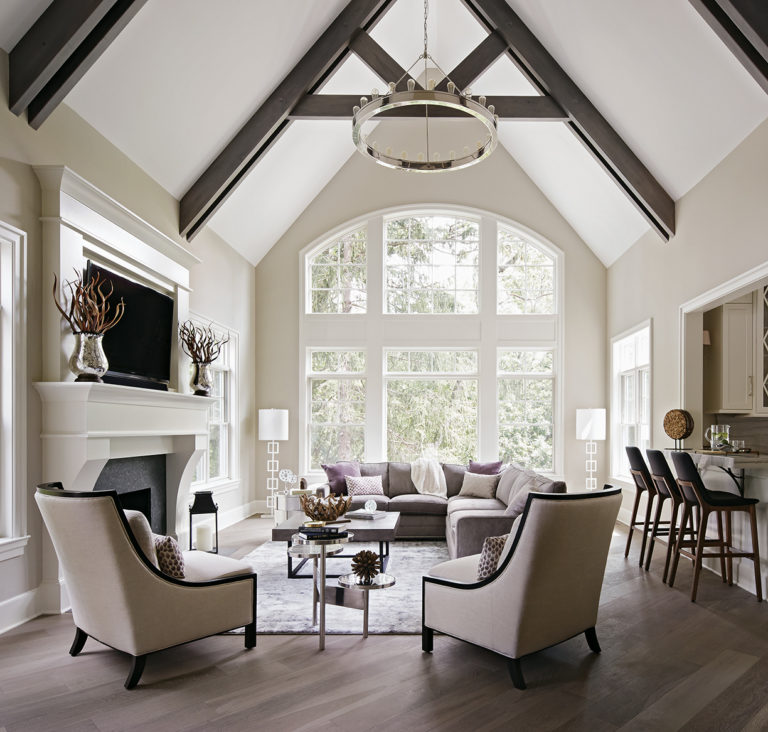
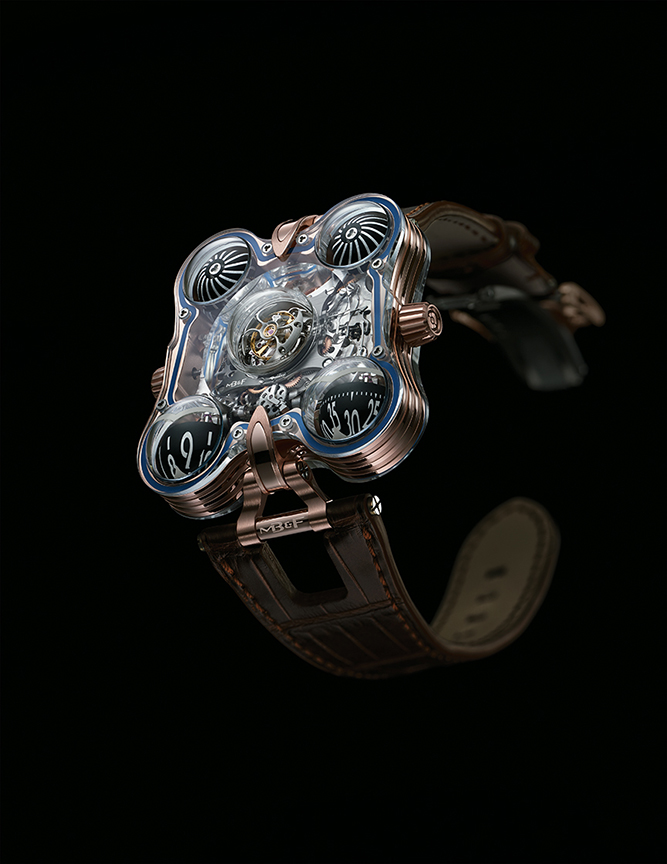
A major trend in today’s high-end wristwatch market is the exhibition of all moving parts, viewed through flawless sapphire.
Although subject to market fluctuations, there remains strong demand for luxury timepieces, particularly among the same clientele vying for vintage sports cars, cases of old Bordeaux and Midtown Manhattan real estate. Some of the hottest new watches, with stratospheric prices to match, reveal intricate operating movements through transparent sapphire cases.
Sapphire crystals — this is synthetic sapphire created in a laboratory, but nonetheless a precious material — are no longer exotic, and show up in many mid-priced timepieces and Apple devices. Far more unusual, however, is when entire cases are made from the material, allowing views inside from every angle. “People are paying for craftsmanship and they want to visually see that craftsmanship,” says Ariel Adams, founder and editor-in-chief of A Blog to Watch and one of America’s leading experts on luxury timepieces.
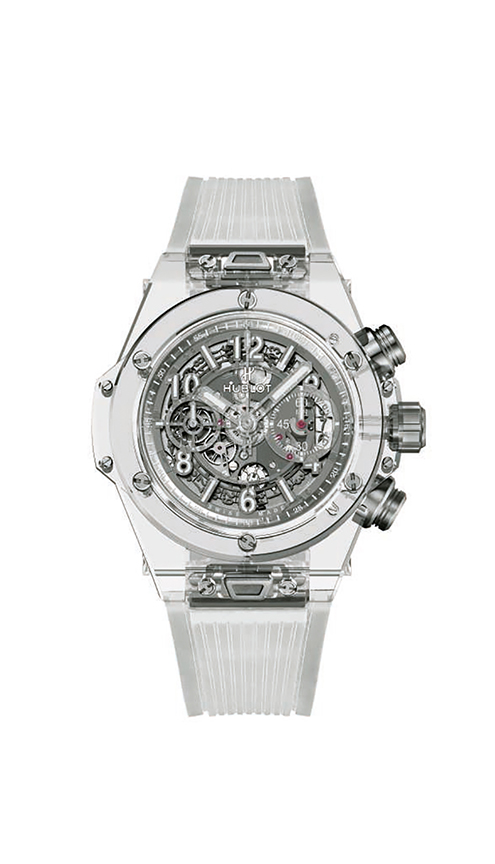
One limited edition watch that exemplifies the all-sapphire trend is the Greubel Forsey Double Tourbillon Technique Sapphire. It is a flashy blend of technology and glamour with the crystal, case back, case band (middle panel), and bezel, all crafted from sapphire, as well as the lugs (where the strap is attached) and crown. The brand is a favorite of Alexander Linz, a prominent watch industry authority and publisher of Watch-Insider.
Speaking to the consistent innovation of watchmakers Robert Greubel and Stephen Forsey, the Vienna-based Linz states, “It’s rare to see watches created with this kind of spirit, love and passion,” and adds, “Their hearts are really in these watches.” All of this invisibility accentuates the complex and aesthetically alluring mechanisms, with many of the flashy watch’s 393 pieces in full view. The price tag on this watch — a limited edition with only eight produced — is a staggering $1.1 million.
Hublot is a highly respected Swiss manufacturer founded in 1980 and now a subsidiary of luxury conglomerate LVMH, whose upmarket brands include Moët & Chandon, Marc Jacobs and Louis Vuitton. One of the company’s most exotic timepieces is the MP-05 LaFerrari Sapphire ($575,000), among the most audacious looking timepieces a gentlemen could ever strap on his wrist. The name reflects Hublot’s partnership with the Italian sports car manufacturer (the watch even carries the automaker’s famed prancing horse logo), and Linz reports it is actually modeled after the backside of a Ferrari supercar. The watch is so aerodynamic, it looks like it could take the pole position at Le Mans.
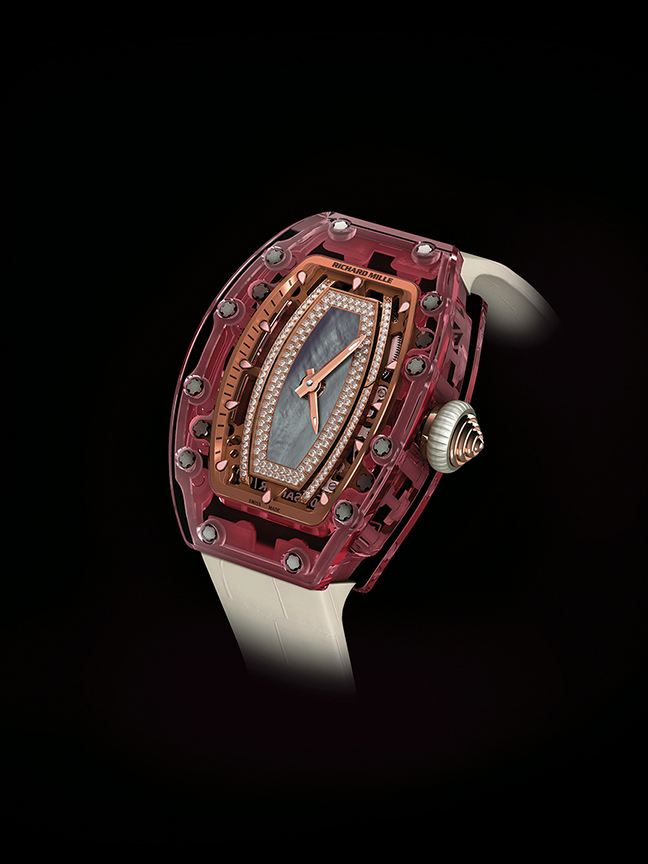
Since its founding just 17 years ago, watchmaker Richard Mille has become a cult favorite, and Linz reports that in Europe, his watches are particularly favored by Formula One racecar drivers. For women, the RM 07-02, nicknamed “Pink Lady Sapphire,” is one of the most stunning-looking watches to ever make its way to market. The case, bezel, case band, and case back are milled from solid blocks of pink sapphire, and the contrasting central dial is crafted from gray mother-of-pearl, bordered by sparkling diamonds that reappear on some of the unveiled red gold mechanisms. The ultimate cocktail watch, the Pink Lady is priced just shy of $1 million.
MB&F is a limited-production boutique brand for elite consumers seeking exclusivity as well as craftsmanship. Its futuristic-looking HM6 SV (that stands for “Sapphire Vision”) combines advanced engineering with one of the most avant-garde aesthetics in the industry. While the entire case is not sapphire, this watch showcases its complex, intricately crafted movement through a multi-bubbled crystal crafted from 11 distinct pieces of sapphire seamlessly fused together. “It’s insanely interesting, and the movement is as much a piece of art as the case,” says Adams. And at nearly $400,000, the watch is priced like real jewels.
Bell & Ross products tend to possess a simple masculinity, strongly influenced by aviation and military instruments. But the BR-X1 Sapphire Tourbillon is a stunning, sheer-cased timepiece cut from nine blocks of flawless sapphire. Unlike some skeletonized watches whose movements are embellished with vibrant colors, variances of white and grey on this watch create an ethereal appearance that commands almost $500,000.
Veteran retailer Greg Simonian, who dispenses extravagant products at Westime, his posh Rodeo Drive boutique, best articulates why luxury watches continue to capture consumers’ imaginations. “There are many devices to tell you the time, but a beautifully crafted luxury watch is part jewelry, part miniature machine, and, most importantly, a real statement about its owner,” he states.
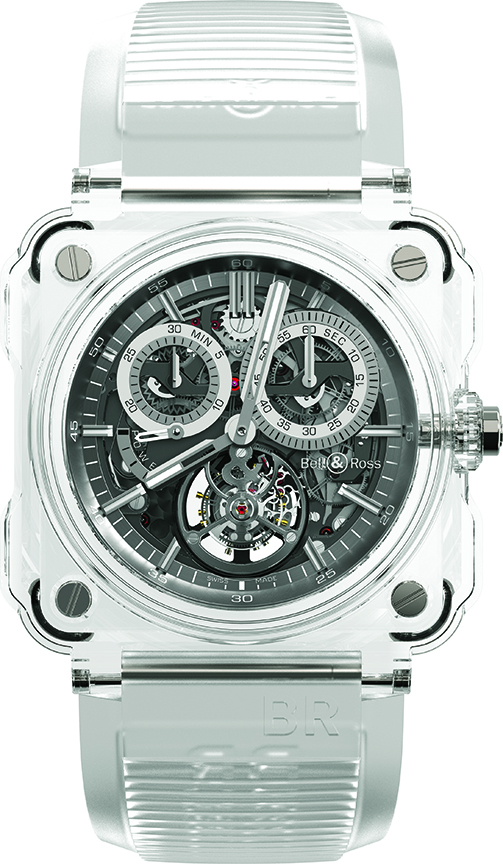
By Samantha Myers
Ten years ago, closet design didn’t exist the way it does today. “When I started the company in 2007, I didn’t know another luxury closet designer,” says Lisa Adams of LA Closet Design. “There were always closet cabinet companies, but what has changed is the design aspect. People are starting to see the value in the design and the potential of creating these amazing closet spaces.”
Closets are no longer simply spaces to hold clothing and items, but are becoming as luxurious as the products they store. “The designs are getting elevated,” says Emily Giebel, design consultant for California Closets. “Customers are looking for more items than are typically in a custom builder closet, and the trends are being pushed by things they see on Pinterest. If they value their closet, they don’t want to do wire racks, they want to make the closet something they can walk into and say it’s great.” Giebel added that she has sold more closets for over $18,000 in the last two years than in the previous five.
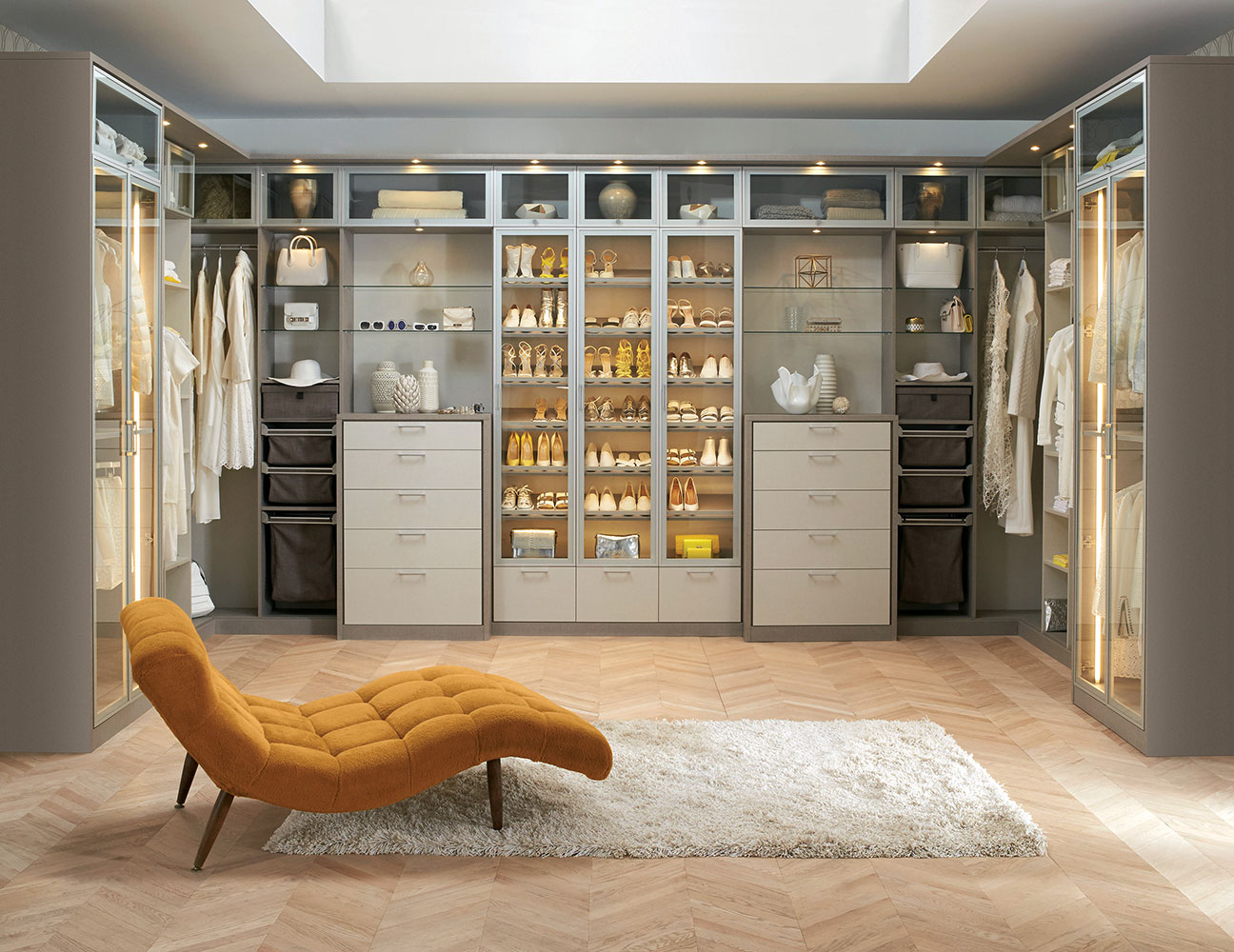
The price range for a luxury closet is typically $10,000 to $50,000, but can go up to $500,000. Adams recalls one of the most grandiose closets she designed — a three-story closet in Bel Air, Los Angeles. “It was spectacular in its materials and finishing, details and accessories. Imagine gold leaf cabinet details, a spiral staircase, biometrics, a jewelry room, cosmetics refrigerator, a panic room,” Adams says. Giebel recently finished a well-appointed closet with leather countertops. “They were purely for an aesthetic purpose; there’s nothing practical about a leather countertop,” she joked.
While extravagant features obviously appear in the higher price range, one of the biggest trends sweeping closets across-the-board is a display-orientated design, inspired by luxury retail boutiques. “Display is functional,” Adams says. “If you see it, then you’re more likely to wear it, to use it. In all the closets that I design, my motto is to be able to see everything in a single glance.”
Boutique-style closet design has employed glass as a means of achieving both display and storage, and is becoming a resounding trend. Another trend is custom lighting, as well as lighting in hanging rods, a technological detail that has been growing in the last few years. “Ten years ago, we didn’t have all those options. We didn’t have glass doors, glass drawers, high-gloss, all that stuff throughout the home that is now being offered in a closet,” Giebel explains. “A lot of the trends are coming from the furniture industry, and we have vendors giving us access to these things.” Up-to-date with interior design trends, closets are adopting a transitional look, leaving behind the traditional style that was popular in the past. “I’ve seen a trend in mixing materials and textures. Blush, brass and marble are hot right now,” Adams adds.
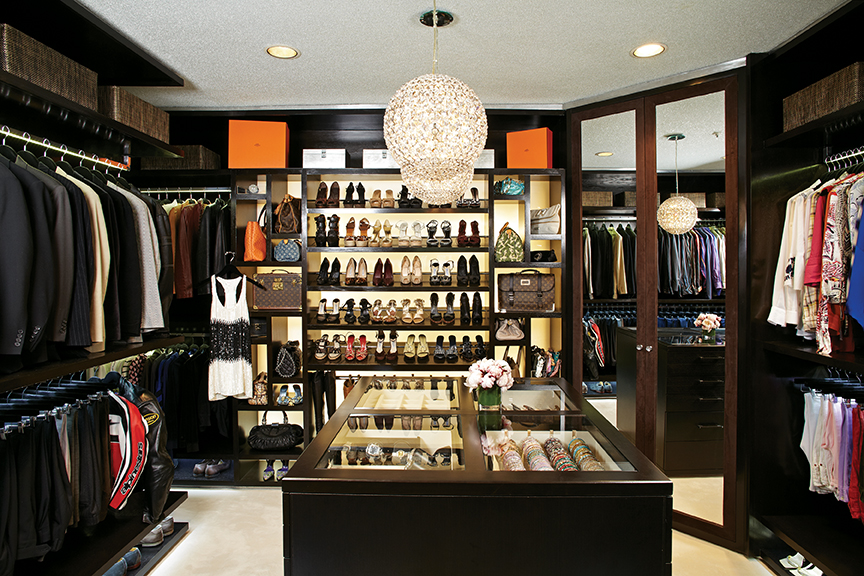
Because closets are receiving more attention on the back end from vendors and distributers, they are becoming focal points for homeowners, comparable to the conventional rooms in a house. “I’m seeing people take rooms over and make them into closets,” Giebel says. “And when additions are done to the home, they are putting more thought into the master walk-in.”
These architectural and design developments suggest that closets are becoming the new “room” in the house, some fit with center islands, couches, vanities and televisions. “People are converting spare rooms to dressing rooms, and I even have projects now where we are converting a living room and dining room into dressing rooms. It’s the feel-good room in the house!” Adams says.
When it comes down to the basics, there are a few things that Adams thinks every walk-in needs. “Every luxury closet should have matching hangers, high-quality functional hardware, a nice finish or lacquer, organized drawers with partitions, base and ceiling molding, and cabinetry that goes to the ceiling,” Adams says. “Similar to a luxury car, you would expect high-quality detailing and a nice paint finish.” Giebel finds importance in mirror options, especially full-length mirrors and decorative molding.
“What I love about my job is to see how something that is in my mind so economical, change somebody so easily by giving you more storage, or making you put things in a certain place so you know where to find them,” says Giebel. “It’s something that’s so simple that they don’t even think about, but it’s transformative. It makes peoples’ lives less chaotic in the mornings, more simple when they are getting dressed.” And for Adams, “I love closets because they are intimate spaces that blend function, art, design and fashion all together.”


